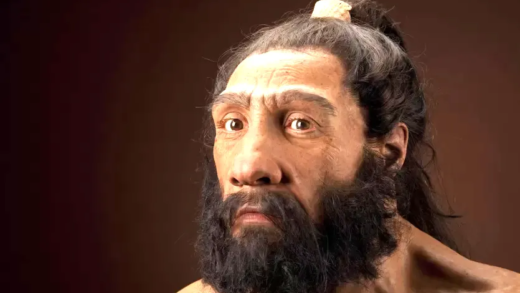Ivar the Boneless was a significant Viking leader whose cunning strategies and military achievements shaped Viking history. His nickname, ‘Boneless,’ has various interpretations, including possible physical disabilities and metaphorical meanings. Ivar’s impact on Viking conquests, his role in society, and modern portrayals in media highlight his enduring legacy as a complex and influential figure.
Who was Ivar the Boneless?: A quick look at his life story
Ivar the Boneless is a prominent figure in Viking history, renowned for his cunning and military prowess. Born in the 9th century, he was one of the sons of the legendary Viking leader Ragnar Lothbrok. His life story is shrouded in both historical accounts and myth, making him a fascinating character. Ivar is often remembered not just for his lineage but also for his role in the Viking invasions of England.
Ivar’s importance in Viking history is underscored by his leadership during significant raids and battles. He played a pivotal role in the siege of York in 866 AD, which marked a critical moment in the Viking conquest of England. His strategic mind and ability to inspire fear and loyalty among his warriors set him apart from other Viking leaders. Understanding Ivar’s life helps us grasp the complex social and political dynamics of the Viking Age.
The Meaning of ‘Boneless’: What does the nickname really mean?
The nickname ‘Boneless’ has intrigued historians and enthusiasts alike. Various theories exist regarding its origin, with some suggesting it refers to a physical disability, while others believe it signifies his agility or cunning in battle. One popular theory posits that Ivar may have had a medical condition that affected his mobility. This condition could have led to his nickname, suggesting a lack of bones or a frail physique.
However, another interpretation sees ‘Boneless’ as a metaphor for his tactical flexibility and ability to evade direct confrontation. This duality adds layers to our understanding of Ivar, making him not only a warrior but also a master strategist. The true meaning behind ‘Boneless’ remains a mystery, reflecting the complexities of Viking society and the legends that surround its figures.
Was Ivar Physically Disabled?: Exploring theories about his health
The question of Ivar’s physical health is a topic of much debate. Historical accounts suggest that he may have suffered from a disability, which would have shaped his approach to warfare. Some records imply he could not walk, leading to speculation that he may have used a chariot or been carried into battle. This perspective challenges traditional views of Viking warriors as solely brawny and robust individuals.
Contrarily, others argue that Ivar’s achievements in battle indicate he was not physically limited in a conventional sense. His success in raids and conquests showcases a warrior who, despite potential physical challenges, leveraged intelligence and strategy. Thus, the discourse surrounding Ivar’s health not only highlights his personal story but also reflects broader themes in Viking culture regarding strength and valor.
Ivar’s Achievements as a Warrior: What made him stand out?
Ivar the Boneless is remembered not just as a legendary figure, but as a remarkably successful warrior. His achievements in battle are well-documented, showcasing his strategic mind and leadership skills. Ivar’s military tactics were innovative for his time, allowing him to overcome foes who underestimated him due to his presumed physical limitations.
Key achievements include:
- Leadership in Raids: Ivar was instrumental in orchestrating raids across England, leveraging his knowledge of local terrains and enemy weaknesses.
- Siege of York: His decisive role in the siege of York in 866 AD was a turning point, leading to the Viking conquest of Northumbria.
- Formation of Alliances: Ivar skillfully formed alliances with other Viking leaders, which bolstered his forces and expanded his influence.
- Innovative Warfare: He employed unconventional warfare strategies, often catching his enemies off guard.
These accomplishments not only highlight Ivar’s prowess as a warrior but also his ability to inspire and lead his troops. His legacy as a cunning strategist remains influential in the study of Viking military history.
Notable Battles and Conquests: Key moments in Ivar’s military career
Ivar the Boneless’s military career is marked by several significant battles that underscore his tactical brilliance. These moments not only shaped his reputation but also had lasting impacts on Viking history.
Some notable battles include:
- Battle of York (866 AD): This siege was pivotal in establishing Viking dominance in England. Ivar’s leadership helped secure a decisive victory against the Saxons.
- Battle of Repton (873 AD): Here, Ivar showcased his strategic acumen by employing surprise tactics to defeat the Mercian forces.
- Raid on East Anglia: Ivar led successful incursions into East Anglia, contributing to the weakening of Saxon resistance.
- Battle of Strangford Lough: This confrontation against the Irish forces illustrated his capability to adapt to different combat situations and terrains.
These battles not only highlight Ivar’s skills as a military commander but also his role in expanding Viking territories. His conquests contributed to the establishment of a formidable Viking presence in England and beyond.
Theories Behind His Nickname: Different perspectives on ‘Boneless’
The nickname ‘Boneless’ attributed to Ivar the Boneless has sparked various theories regarding its origin. Understanding these perspectives offers insight into Ivar’s character and the cultural context of his time.
Key theories include:
- Physical Disability: Some historians suggest that Ivar may have suffered from a condition that limited his mobility, leading to the nickname.
- Metaphorical Interpretation: Others argue that ‘Boneless’ refers to his agility and cunning, suggesting he was elusive in battle.
- Symbol of Fearlessness: The nickname could symbolize Ivar’s fearless nature, implying he had no bones to hold him back from engaging in battle.
- Literary Creation: Some believe the nickname is a later literary embellishment, crafted to enhance his legendary status.
These varying interpretations highlight the complexities surrounding Ivar’s identity and the ways in which history can be shaped by legend. The true meaning of ‘Boneless’ remains elusive, adding an intriguing layer to Ivar’s legacy in Viking lore.
Ivar’s Impact on Viking History: How did he shape the era?
Ivar the Boneless significantly impacted Viking history, influencing both military strategy and Viking society. His leadership during pivotal raids and battles helped solidify Viking presence in England, marking the beginning of an era of Viking dominance. Ivar’s innovative tactics, such as using psychological warfare and forming strategic alliances, set new standards for Viking warfare.
His actions during the siege of York and other notable campaigns showcased the effectiveness of combined forces and surprise tactics. This not only expanded Viking territories but also instilled fear in their enemies, reshaping the political landscape of the time. Ivar’s legacy extends beyond his lifetime, as his methods of warfare influenced future generations of Viking leaders, making him a key figure in Viking history.
Historical Accounts vs. Legends: How do stories compare?
The contrast between historical accounts and legends surrounding Ivar the Boneless reveals much about the nature of Viking storytelling. While historical records provide insights into Ivar’s life and military achievements, legends often embellish these facts, creating a larger-than-life persona. For instance, accounts of his battles depict him as a formidable warrior, yet the tales often exaggerate his physical prowess and cunning.
Historians rely on sources like the “Saga of Ragnar Lothbrok” and Anglo-Saxon chronicles to piece together Ivar’s true story. However, these sources are often mixed with myths, leading to discrepancies between what is fact and what is folklore. Understanding this interplay between history and legend helps clarify Ivar’s role and significance in Viking culture, illustrating how stories evolve over time to reflect societal values and beliefs.
Ivar’s Role in Viking Society: What was his place among the Vikings?
Ivar the Boneless occupied a unique position in Viking society, blending the roles of a warrior, leader, and strategist. His lineage as the son of Ragnar Lothbrok placed him in a prominent social status, granting him respect and influence among his peers. Ivar’s reputation as a cunning warrior bolstered his standing, allowing him to command loyalty from his followers.
In Viking culture, leadership was often tied to prowess in battle, and Ivar’s achievements solidified his role as a key figure in Viking raids. His ability to form alliances with other Viking leaders further enhanced his status, making him a vital player in the broader context of Viking conquests. Ivar’s contributions to Viking society highlight the importance of military success and strategic thinking in achieving and maintaining power during this era.
Modern Portrayals of Ivar: How is he depicted today?
Today, Ivar the Boneless is portrayed in various media, including television series, films, and literature, often reflecting contemporary interpretations of Viking culture. Shows like “Vikings” have popularized his character, emphasizing his intelligence and cunning over physical strength. These portrayals contribute to the ongoing fascination with Viking history, blending fact with fiction.
Modern depictions often highlight Ivar’s complexities, portraying him as a multifaceted character who navigated the challenges of his time. This nuanced representation invites audiences to explore the depths of Viking culture, showcasing how Ivar’s legacy continues to captivate the imagination. As a result, Ivar the Boneless remains a significant figure in both historical and popular contexts, bridging the gap between ancient legends and contemporary storytelling.





Comments are closed.